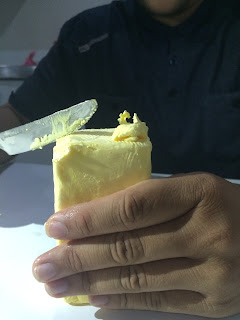Story Selection
On Monday we got into our teams and discussed our individual scripts and ideas, and there were lots of cool ideas that had been produced among us. It was a hard decision, but we slowly narrowed it down by giving our feedback and then voting for three of the scripts.
The voting narrowed it down to Jerwin, Michelle, and my own ideas. We discussed further what we think would be the easiest to produce as well as what we could make well. We went with my script of 'Butter Up'.
With Jerwin feeling confident in 3D and Jonathan with 2D, we felt the hybrid option of both would be suited to our strengths. The proposed idea is for the character - a stick of butter - to be a 3D model, while his expressions will be 2D.
Schedule
After selecting the script we wanted to run with, we moved onto the Production Schedule. We kept it a collaborative effort, so we could assign roles we are both interested in and feel we can perform best in. The three major roles were assigned first, resulting in:
Producer: Michelle Z
Director: Mikayla
Head of 3D: Jerwin
Michelle C is helping Jerwin with the 3D while Zack is helping Jonathan. We all agreed that we will help each other where it is needed, particularly Michelle Z and I as we're taking on the most flexible rolls. It will be subjected to change as we progress, but we have tried to divide the rolls as best fit.
Feedback
Today we presented our script to Dane, Zak, and Keat, who gave us feedback on our story and intentions. The first thing mention was that the puns should be more butter centered. The involvement of other food makes it somewhat confusing and unclear, and it could make the animation too long. Tonight I will type out the revised script to send to the team, including the character profile so they have it available to them during design process.
The next big piece of feedback was more focused on the character itself, and the research we should undergo. We have to design it to be able to make the expressions and body language comprehensive and read well. Also his design came in question with what was essential to his character and what isn't. Overall the feedback was helpful and will give us a lot to consider.






















